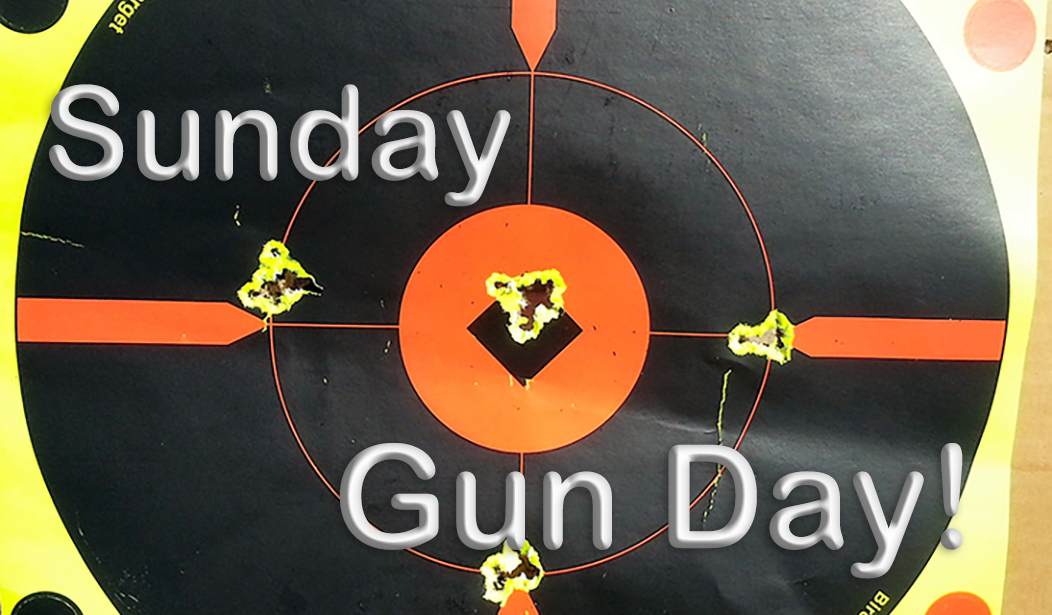During the Spanish-American War, the War Department decided that the 1892 Krag-Jorgensen rifle and its low-velocity .30-40 cartridge stacked up poorly against the Spaniard's 1893 Mausers firing the 7X57mm round. The Mausers had the advantage of being loaded by stripper clips, allowing a high rate of sustained fire, while the Krag rifle could only be loaded one round at a time. (There was an adapter for the Krag, the Parkhurst & Warren, that allowed the use of stripper clips, but it was not generally issued.)
We’ve already seen the full story of the Krag, of course.
See Related: Sunday Gun Day Vol. II Ep. XXVI - America's Misfit Toy, the 1892 Krag Rifle
The design that succeeded the Krag was the M1903 Springfield. The first '03s fired the caliber .30, Model of 1903 cartridge with a 220-grain bullet. Three years later, however, the '03 round was modified slightly, given a slightly shorter neck and a 150-grain bullet, and named the Cartridge, Ball, caliber .30, Model of 1906—and thus, a legend was born, although the success of the .30-06 Springfield is a story for another time. That may be the best bit of the Springfield rifle's legacy.
The '03 Springfield was not completely, however, a modified 98 Mauser, as the conventional wisdom states. War Department documents indicate that the designs of the 1903 model were influenced by three other designs. Two of these were the Krag, from which the '03 got its cock-on-opening mechanism and distinctive cocking piece; and the Spanish Mauser, from which came the five-round Mauser-type box magazine, claw extractor and stripper clip feed. Also mentioned in the War Department documents is the "old Mauser," presumed to mean the 1889 Belgian - 1891 Argentine pattern, which had been evaluated by the War Department before. It's difficult to see any design characteristics adapted from the 1889-1891 pattern in the '03 Springfield, but it was mentioned.
What resulted, though, was an action very similar to the 98 Mauser. The final 1903 action had a large, Mauser-type claw extractor, a fixed ejector, a two-stage trigger, and a Mauser-style solid box magazine/trigger guard assembly. The bolt stop was combined with a magazine cutoff, however, eliminating the distinctive large flat extractor/bolt stop housing on the left rear of the Mauser receiver. The action cocked on the opening stroke of the action, and the large, knurled cocking piece design of the Krag was retained. Thus was the United States military equipped with one of the finest infantry rifles of the time.
See Related: Sunday Gun Day Vol. II Ep. IV - Five Great Infantry Rifles
The Model 1903 Short Rifle was the original issue version of the Springfield rifle. The pattern was approved as the "United States Magazine Rifle, Caliber .30, Model of 1903." In 1918, after some troublesome receiver failures, the Springfield Armory and other contract manufacturers began a "double heat treatment" of 1903 receivers. The improved hardening process began with serial number 800,000 at Springfield Armory and serial number 285,507 at Rock Island Arsenal. Rock Island Arsenal also made some guns with nickel steel receivers, which were marked NS on the receiver ring.
The Model 1903 Mark 1 was designed to use the Pedersen device, an adapter that replaced the bolt assembly and converted the rifle to a semi-automatic firing a small .30 caliber pistol-type cartridge. The Pedersen device used a rather clumsy magazine sticking out of the rifle at an angle to the upper right, while spent cartridge cases were ejected out a small port on the left side of the receiver. The device was intended to allow riflemen to deliver a high volume of fire while "advancing at the walk" across No-Man's Land - a tactic that would be considered suicidal (at least by this former Infantry type) today, and, honestly, was pretty suicidal at the time. The end of WWI ended procurement of the Pedersen device, although Mark I rifles remained in service and may be identified by the legend "Mark I" legend below the "Model 1903" on the receiver ring, and the small ejection port cut in the left side of the receiver.
The Model 1903A1 was a standard 1903 rifle fitted with a modified pistol-grip stock, which replaced the straight wrist Style S stock. The M1903A1 was produced from 1929 through 1942.
The Model 1903A3 was approved and began manufacture in 1942. The 03A3 was designed to speed up production and reduce costs. The straight grip Pattern S stock returned, along with a stamped trigger guard/floorplate. A peep sight mounted on the receiver replaced the barrel-mounted rear sight.
The Model 1903A4 Sniper Rifle was a 1903A3 fitted with a pistol-grip stock and a 2.5X Telescope M73B1, a militarized Weaver 330C. The M1903A4 was used as a sniper arm into the Vietnam years, although it had been largely replaced by the M1C Garand and the Model 70 Winchester by the late Forties.Several civilian versions of the 1903 pattern were produced. The Model 1903 National Match was made specifically for military-style match shooting and was available through the Director of Civilian Marksmanship (DCM.) The Model 1903 "Match Springfield" was a 1903 National Match model with a heavy barrel, barrel blocks for optical sights, and a headless cocking piece. From 1924 to 1938, Springfield produced the Model 1903 NRA Sporter, which was a National Match grade rifle with a half-stock (what we would now call a "Sporter" stock, a Lyman receiver sight, and a barrel turned down to a smaller profile. Production of these rifles stopped in 1938 after complaints from sporting gun manufacturers about the U.S. Government armory producing sporting rifles. The final version was the Model 1903 Style T, similar to the NRA Sporter but with the Match Springfield's heavy barrel and scope blocks.
The Springfield actions have long been popular with custom rifle makers as well. Col. Townsend Whelen carried a custom 1903 Springfield on many hunts, as did President Theodore Roosevelt. I’ve dabbled with a couple of sporterized 03s myself, and I find the action to be solid and reliable.
Upon examination, the 1903 Springfield's relation to the Mauser is obvious. The rifles' reputation for accuracy is well-documented as well. It has been said that of bolt-action military rifles, the Mauser was the best hunting rifle, the Springfield the best target rifle, and the Lee-Enfield the best battle rifle (due to a smooth, fast action, short bolt throw, and 10-round magazine). Many National Match marksmen would agree.














